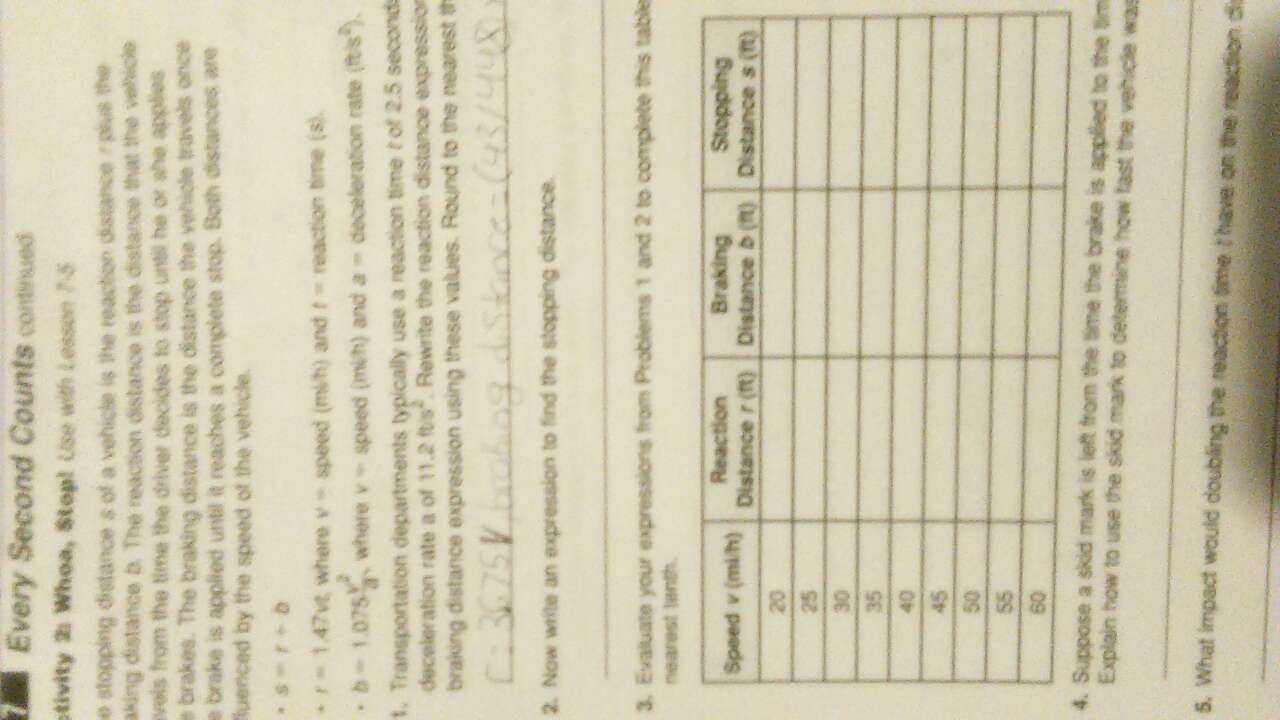
Solution:
The reaction distance is $ r = 3.675v $
The braking distance is $ b = \frac{43}{448}v^2 $
The stopping distance is $ s = 3.675v + \frac{43}{448}v^2 $
The table is
v
|
reaction
|
braking
|
stopping
|
20
|
73.5
|
38.39286
|
111.8929
|
25
|
91.875
|
59.98884
|
151.8638
|
30
|
110.25
|
86.38393
|
196.6339
|
35
|
128.625
|
117.5781
|
246.2031
|
40
|
147
|
153.5714
|
300.5714
|
45
|
165.375
|
194.3638
|
359.7388
|
50
|
183.75
|
239.9554
|
423.7054
|
55
|
202.125
|
290.346
|
492.471
|
60
|
220.5
|
345.5357
|
566.0357
|
We can solve for $ v $ by using the skid mark. The length of the skid mark is the same as stopping distance.
If we double the reaction time, the reaction distance would double.
No comments:
Post a Comment